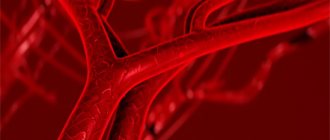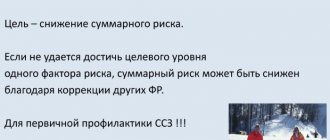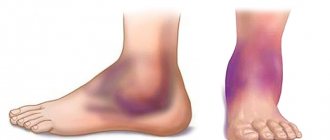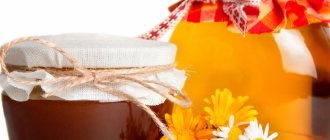Cooking and eating
With moderate mechanical care. Meat and fish are boiled. Prepared without salt...
Allowed
Bread and flour products: wheat bread made from grade 1 and 2 flour, yesterday’s baking or slightly dried, dietary salt-free bread, savory cookies and biscuits
Soups: 250-400 g per serving, vegetarian with various cereals, potatoes and vegetables, beetroot soup, you can add sour cream, herbs
Meat and poultry: lean varieties of beef, veal, meat and trimmed pork, rabbit, chicken, turkey. After boiling, you can bake or fry, or make jellied dishes. Boiled sausages – limited
Fish: low-fat varieties
Dairy products: milk if tolerated, fermented milk drinks, low-fat cottage cheese and dishes made from it, cheese Eggs: up to 1 pc. per day, soft-boiled, baked omelettes, egg white omelettes or added to dishes
Cereals: dishes from various cereals in the form of porridges, casseroles, boiled pasta
Vegetables: boiled, baked or raw potatoes, carrots, beets, zucchini, pumpkin, tomatoes, lettuce, cucumbers
White cabbage and green peas in limited quantities. Green onions, dill, parsley - in dishes
Fruits, sweet dishes: soft ripe fruits and fresh berries, dried fruits, compotes, jelly, mousse, jellies, milk jelly and creams, honey, jam, non-chocolate candies
Drinks: weak tea, coffee drinks, fruit and vegetable juices, rosehip infusion, limited grape juice
Fats: unsalted butter and ghee, natural vegetable oils
Must be excluded
Fresh bread, butter and puff pastry products, meat, fish and mushroom broths, fatty meats and fish, goose, duck, liver, kidneys, brains, smoked meats, sausages, canned meat and fish, caviar, salty and fatty cheeses, hard-boiled and fried eggs, legumes, salted, pickled and pickled vegetables, spinach, sorrel, radish, radishes, garlic, onions, mushrooms, fruits with coarse fiber, chocolate, natural coffee, cocoa, meat and cooking fats.
In case of circulatory failure of a more pronounced degree (2b-3) of the cardiovascular system, dishes are prepared boiled and mashed; fried foods, hot and cold, are prohibited. Diet: 6 times a day in small portions. The amount of bread is reduced to 150 g per day, the amount of soup is reduced to 200 g or completely eliminated. Exclude cheese, millet, barley and pearl barley. The amount of liquid taken per day is limited to 800-1000 ml under the control of urine output. The set of basic products is the same as for the N10 diet.
Download and print:
Diet No. 10
Make an appointment Do not self-medicate. Contact our specialists who will correctly diagnose and prescribe treatment.
What's not allowed?
Caffeine . Caffeine is contraindicated for most patients with atrial fibrillation. It speeds up your heart rate and may worsen symptoms. If you can't give up coffee and tea, there's good news: a 2021 study that examined the relationship between arrhythmia and caffeine found that it's safe to consume up to 300 mg of the substance per day. However, it is best to discuss this issue with your doctor.
Salt . It is very important to limit it, since salt abuse can lead to increased blood pressure, which, in turn, increases the risk of atrial fibrillation. The foods most of us are accustomed to contain too much salt. Avoiding processed foods and processed foods and replacing salt with seasonings is a smart nutrition strategy for everyone, especially those with heart disease.
What foods should you avoid? An infographic from the American Heart Association will tell you.
Menu (Power Mode)
Proper nutrition includes daily consumption of vegetables, fruits, healthy cereals, oils, and fish. The list of products is extensive, which allows you to create a varied and unique menu. The diet must contain properly prepared foods—frying is excluded. Limiting carbohydrates and fats will have a positive effect on weight.
| Breakfast |
|
| Lunch |
|
| Dinner |
|
| Afternoon snack |
|
| Dinner |
|
| For the night |
|
| Breakfast |
|
| Lunch |
|
| Dinner |
|
| Afternoon snack |
|
| Dinner |
|
| For the night |
|
| Breakfast |
|
| Lunch |
|
| Dinner |
|
| Afternoon snack |
|
| Dinner |
|
| For the night |
|
What the heart loves
Eating low-fat foods is recommended by cardiologists.
Fresh vegetables and fruits, seafood, dairy products are rich in microelements:
- Potassium, necessary for heart contraction, is found in bananas, black currants, parsley and potatoes, especially baked or boiled in their jackets. A lot of K is found in dried apricots, raisins, prunes, cabbage, and sunflower seeds.
- Magnesium is an essential mineral for proper heart function. There is a lot of Mg in oatmeal and buckwheat, fresh cucumbers. Walnuts, hazelnuts, pistachios, cashews, and peanuts contain large amounts of the element. Mg is also found in hake fish, spinach and legumes - beans, lentils, peas. Magnesium is found in yeast, bran, and avocados.
- Dietary fermented milk products with low 3% fat content - kefir, cottage cheese, fermented baked milk - are rich in calcium. Hard cheeses contain calcium. Some vegetables contain high amounts of Ca - cauliflower, artichokes.
By the way! Calcium is not absorbed from low-fat sources, since it is absorbed only along with vitamin D, which is a fat-soluble substance.
- The diet includes sprouted wheat, honey, garlic.
Nutrition for arrhythmia should be varied. In addition to the above mentioned healthy products, the menu also consists of poultry and sea fish. Bread products labeled “Whole Grain” are preferred.
Such products contain a full range of vitamins and minerals. An alternative is to add bran to any dish.
Heart rhythm disturbances in the form of blockade are often encountered. It is characterized by a slowing of the rhythm to varying degrees. Rare heartbeat develops more often with poisoning with glycosides, β-blockers, Clonidine, Verapamil. The diet for the treatment of blockade consists of foods containing a lot of potassium.
A balanced diet is a real path to recovery for patients with arrhythmia.
Prevention of arrhythmia: types and causes of occurrence
In medicine, several types of arrhythmia are defined:
- sinus (bradycardia, tachycardia, extrasystole);
- paroxysmal tachycardia;
- ventricular or atrial fibrillation;
- heart block.
To ensure proper prevention of cardiac arrhythmia, it is necessary to exclude factors predisposing to arrhythmia.
Among them:
- violation of acid-base, water-salt metabolism;
- arterial hypertension;
- menopausal symptoms;
- disturbances in the functioning of the endocrine system (especially diseases of the adrenal glands and thyroid gland);
- physical or nervous stress;
- the effect of certain toxic substances or medications;
- ischemia;
- traumatic brain injuries;
- neoplasms in the brain;
- heart defects;
- alcohol abuse, smoking;
- frequent stressful situations;
- inflammatory processes in the heart muscle (myocarditis);
- reduction of sugar in the bloodstream;
- atherosclerosis.
Contraindications to diets for men and women
Dietary nutrition is recommended for all patients without exception, but there are precautions for certain categories. Children and adolescents should not use low-fat, low-protein diets because they can cause slow growth and hormonal imbalances. If it is necessary to reduce the caloric content of the diet, you need to control the intake of simple carbohydrates (sugar and flour), carbonated sweet drinks and fast food.
For pregnant and lactating women, strict diets are also not used, and the content of essential nutrients should be balanced. A healthy diet necessarily includes lean fish and meat, boiled and fresh vegetables, bread and whole grain cereals, dairy products, berries and fruits.
Diet for diabetics is no less important than medications. For them, any food other than treatment table No. 9 is unacceptable. Only an endocrinologist can make changes to it. If the diet is violated, the content of glucose, ketone bodies, and acid-base balance in the blood can change dramatically. The consequences of this are extremely dangerous - coma and even death.
If there are concomitant dysfunctions of the digestive organs or kidneys, it is necessary to take into account the peculiarities of constructing a menu for these diseases. In such cases, it is best to seek help from a nutritionist.
conclusions
Diseases of the cardiovascular system occupy first place in the ranking of causes of death in developed countries. Today, atrial fibrillation, along with extrasystole, is increasingly being detected in young people. The chances of getting heart rhythm disturbances are increased by physical inactivity, obesity, smoking, alcoholism, and hereditary family history.
Nutrition for atrial fibrillation must fully meet the body’s energy needs and be varied, complete, and balanced. Obese patients are advised to reduce their daily caloric intake to 2500 kcal. A balanced diet and systematic use of antiarrhythmic drugs makes it possible to reduce the overall cardiac risk, reduce the frequency of paroxysms and alleviate the course of the disease.
How to eat if you have heart arrhythmia
You need to eat food in small portions, 3-4 times a day and not forcefully. Don't forget to chew thoroughly. In a state of calm, the body absorbs maximum nutrients. The temperature of the food should be warm. Too cold or hot will negatively affect digestion. It is necessary to remove foods with a high content of saccharides from the diet. It is recommended to leave the table half-starved so that an overfilled stomach does not provoke irritation of the vagus nerve. Otherwise, the functions of the sinus node will deteriorate.
Exercises for atrial fibrillation
In addition to diet, exercise can also help manage risk factors for atrial fibrillation, such as obesity and hypertension.
A 2021 study found that people with atrial fibrillation who exercise regularly have a low chance of developing an arrhythmia. This group also had milder symptoms.
Research shows that even small amounts of exercise can help reduce the incidence of atrial fibrillation symptoms. The person may do exercises such as walking, light jogging, or swimming.
For people with atrial fibrillation, doctors may give a pacemaker. A patient who has recently had a pacemaker installed should avoid vigorous exercise for 4 to 6 weeks. After this time, he can continue to exercise, but must take precautions in contact sports such as football or boxing.
List of prohibited products
The diet for atrial fibrillation excludes the following foods:
- Caffeine-containing drinks - strong coffee, tea (excessive stimulation of the heart).
- Smoked sausages, bacon (excess animal fats, salt).
- Pickles, pickled foods, canned food (excess salt, provoking additional fluid intake).
- Fatty meats and offal (excess cholesterol and calories).
- Whole fat dairy products.
- Butter and cream pastries, white chocolate (refractory fats, excess sugar).
- Semi-finished products, unhealthy fast food (contribute to weight gain).
- Hot sauces, spices, seasonings (reflexively stimulate cardiac activity).
- Alcohol (causes spasm of the coronary arteries, impairs myocardial nutrition).
Reviews and results
This therapeutic diet must be adhered to constantly. The diet is well tolerated because the diet is varied. Limiting non-healthy foods can help you lose weight and improve your overall health. However, some patients find it difficult to tolerate a reduction in the amount of salt and sweets and they allow themselves “dietary liberties”.
- “... The first attack of atrial fibrillation was 3 years ago. It was quickly stopped and supportive treatment was prescribed. The doctor warned that if you have atrial fibrillation, you should not be nervous, drink alcohol or overeat. The rhythm dropped after the feast: copious amounts of food and drink. The pills I carry with me didn’t help either. I ended up in the department again. This time it took a long time to restore the rhythm. During the examination, high cholesterol was revealed, and over the course of 3 years I gained a little weight. They advised me to go on a diet and recommended losing weight. This time I took the recommendations more seriously. The transition to a healthy diet was difficult - limiting salt, sweets, favorite smoked foods, fried meat and lard. I only stayed strictly for a month, then expanded my diet a little. Today I eat a lot of vegetables, dried fruits, honey, seeds, bread only with bran, baked fish and chicken. I ate this way for six months. The weight dropped, there were no attacks, since during this time I did not allow myself any alcohol”;
- “... I regularly see a cardiologist about arrhythmia. I try not to freak out, I don’t overeat, I don’t drink alcohol, and I gave up tea. Replaced it with juices, fruit drinks, and herbal decoctions. The doctor said that it was impossible to do without a diet, since with age my blood pressure began to increase and my weight gained. If you lose weight and eat right, you can keep your arrhythmia in check. I switched to boiled or baked meat and chicken, I don’t eat fried food at all, I cook for my family when I go out. I try to eat more vegetables and fruits. In winter, this is more difficult, but I buy frozen vegetable mixtures and simmer them in water with a small amount of vegetable oil. I practically don’t eat bread or pastries—only bread without yeast. As a result, my weight decreased and it became easier to move and breathe. I haven’t had any attacks, but I take pills all the time.”
Healthy foods for the heart
Experts have compiled the following rating of foods that are beneficial for the heart muscle:
- Products enriched with vitamin E - cheese, cottage cheese, legumes.
- Natural grape juice. The most effective product is obtained from red grape varieties. It is recommended to drink 200-250 ml daily.
- Low fat milk. Fresh milk is especially useful. The recommended daily intake is 300-400 ml.
- Sea fish. The omega-3 fatty acid it contains has a beneficial effect. Particularly notable are: mackerel, herring, cod, salmon.
- Nuts. Walnuts have proven to be excellent, and should be eaten 5-6 times a day.
Interesting article: Effective diet for hypertensive patients with heart and vascular diseases
- Diet for blood type 2 negative: food table and diet
Other tips for AFib
There are several other ways a person with atrial fibrillation can make lifestyle changes to improve heart health.
Quit smoking
People who smoke are 2.1 times more likely to develop atrial fibrillation. There is also a link between smoking and other diseases such as coronary heart disease.
Getting enough sleep
Sleep deprivation, obstructive sleep apnea, and other sleep disorders can increase the risk of atrial fibrillation. Managing sleep apnea and stress can help a person improve their sleep quality.
Using relaxation
Stress, anger and anxiety have a significant impact on atrial fibrillation. Researchers report an 85% reduction in atrial fibrillation symptoms in people who feel happy. Regular relaxation and stress reduction through activities such as yoga can help manage these emotions.
What is atrial fibrillation?
Atrial fibrillation
(AF) is a supraventricular tachyarrhythmia with chaotic, uncoordinated electrical activity that results in an irregular heartbeat.
Atrial fibrillation itself is not a life-threatening condition, but it can increase the risk of stroke, thrombosis and congestive heart failure.
Several risk factors increase your chance of developing atrial fibrillation. These include:
- overweight
- diabetes
- high blood pressure (hypertension)
- smoking
- alcohol consumption
- obstructive sleep apnea
- high cholesterol
- family history of atrial fibrillation
There is no cure for atrial fibrillation. Some people may need medication, cardioversion, a pacemaker, or catheter ablation to treat this condition.
Cardiologists recommend that people who experience atrial fibrillation eat foods low in saturated fat, trans fat, salt and cholesterol.
Diet as arrhythmia prevention
Food can be not only beneficial, but also harmful if it contains toxic substances or an excess of certain elements. An unhealthy diet can sometimes cause high cholesterol levels in the blood. With this disorder, atherosclerosis of the vascular system develops.
This disease causes various pathological changes in the heart, disturbances in its functioning, and the development of arrhythmia. Prevention of cardiac arrhythmia should include eating natural and healthy food, which is prepared mainly by steaming or in the oven. Food should not be too spicy, fatty, hot or salty. It is also recommended to eliminate or reduce the consumption of sweets, pickles, strong tea and coffee. It is necessary to include a sufficient amount of fresh herbs, cereals, fruits, vegetables, and low-fat dairy products.






